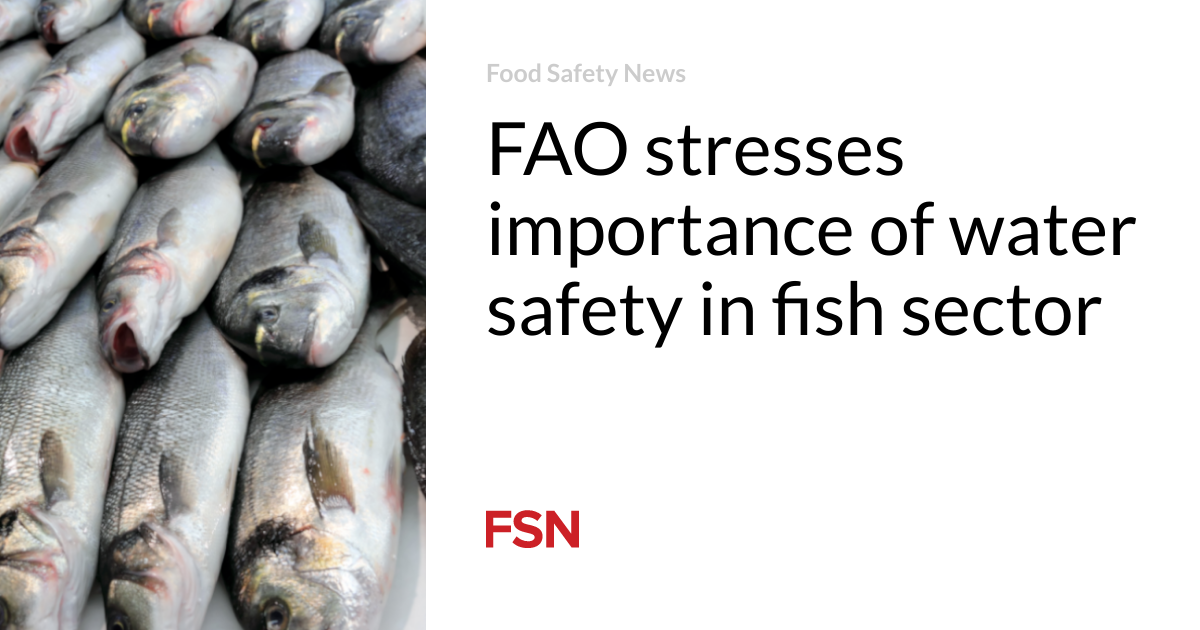World
FAO Highlights Water Safety’s Crucial Role in Fisheries Sector

The United Nations Food and Agriculture Organization (FAO) has emphasized the essential role of water safety in the fisheries sector, underscoring its significance in ensuring food safety. This assertion is based on findings from a recent report that advocates for strategies to minimize microbiological risks and enhance public health through effective water management practices.
Water is integral to various operations in fisheries, including washing, cleaning, and chilling fish, as well as serving as an ingredient. It is also critical for sanitation and temperature control. A workshop held in Choluteca, Honduras, in April 2023, brought together 45 participants from 11 countries, comprising scientists, regulators, food businesses, and food safety inspectors.
Key Findings and Workshop Goals
The workshop aimed to present findings from microbiological risk assessments, compare “fit-for-purpose” water approaches to conventional “clean water” methods, and train participants on utilizing decision trees for risk assessment. Experts emphasized that these decision trees must be tailored to local conditions, considering factors such as seasonal variability, infrastructure limitations, and established safe practices.
During discussions, participants stressed the importance of thoroughly assessing water sources and identifying potential hazards. Representatives from various countries noted challenges, including inconsistent definitions and limited resources. Practical insights into water management were gained through visits to shrimp farms.
Challenges identified included managing seasonal variability in water quality and the risks posed by birds and other animals, which can increase the likelihood of fecal contamination. Additionally, the frequency of monitoring, thresholds, and enforcement measures varied significantly between countries.
A Risk-Based Approach to Water Management
Attendees underscored the necessity of adopting a risk-based, fit-for-purpose approach to water use in fish production and processing. This approach includes assessing water sources, identifying hazards, evaluating treatment options, and implementing multiple barriers to ensure safety. Potential measures could involve filtration and disinfection, alongside Good Hygiene Practices (GHPs) and Hazard Analysis and Critical Control Points (HACCP).
The report clarifies that while clean water may not meet drinking water criteria, it does not compromise food safety. This distinction is crucial for ensuring that the water used in fisheries remains safe and effective for food production.
In related news, the Joint FAO/WHO Expert Committee on Food Additives (JECFA) has recently released a report evaluating the risks associated with both inorganic and organic arsenic species. The committee re-evaluated food safety risks based on updated toxicological data, occurrence, and dietary exposure information published since the last review. Notably, no new human studies were identified that would alter the previous assessment, which indicated that inorganic arsenic is linked to lung, bladder, and skin cancer.
Through these initiatives, the FAO continues to advocate for enhanced water management practices in the fisheries sector, contributing to improved public health outcomes and food safety standards worldwide.
-

 Lifestyle3 months ago
Lifestyle3 months agoLibraries Challenge Rising E-Book Costs Amid Growing Demand
-

 Sports3 months ago
Sports3 months agoTyreek Hill Responds to Tua Tagovailoa’s Comments on Team Dynamics
-

 Sports3 months ago
Sports3 months agoLiverpool Secures Agreement to Sign Young Striker Will Wright
-

 Lifestyle3 months ago
Lifestyle3 months agoSave Your Split Tomatoes: Expert Tips for Gardeners
-

 Lifestyle3 months ago
Lifestyle3 months agoPrincess Beatrice’s Daughter Athena Joins Siblings at London Parade
-

 World3 months ago
World3 months agoWinter Storms Lash New South Wales with Snow, Flood Risks
-

 Science3 months ago
Science3 months agoTrump Administration Moves to Repeal Key Climate Regulation
-

 Science2 months ago
Science2 months agoSan Francisco Hosts Unique Contest to Identify “Performative Males”
-

 Business3 months ago
Business3 months agoSoFi Technologies Shares Slip 2% Following Insider Stock Sale
-

 Science3 months ago
Science3 months agoNew Tool Reveals Link Between Horse Coat Condition and Parasites
-

 Sports3 months ago
Sports3 months agoElon Musk Sculpture Travels From Utah to Yosemite National Park
-

 Science3 months ago
Science3 months agoNew Study Confirms Humans Transported Stonehenge Bluestones









